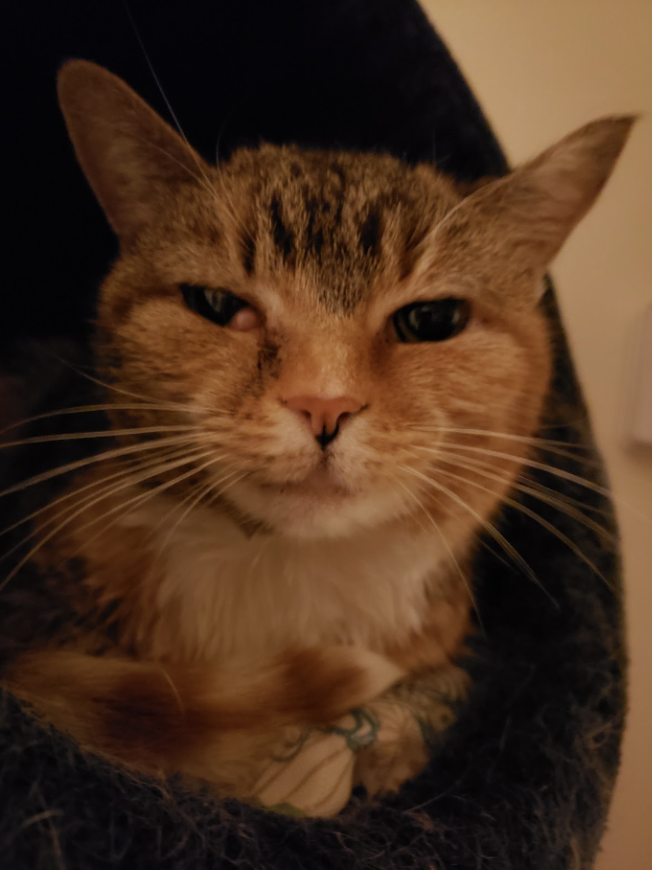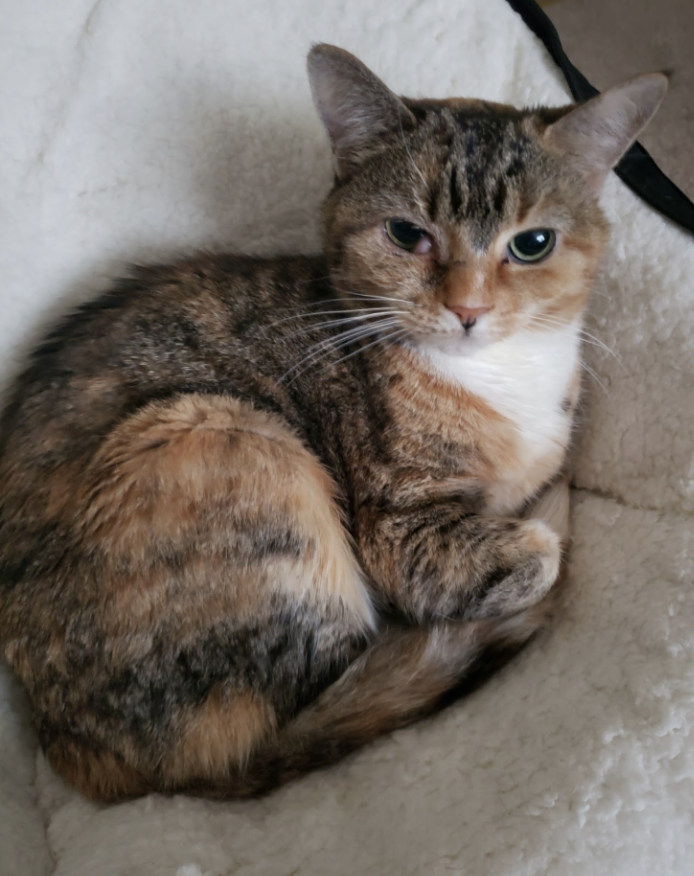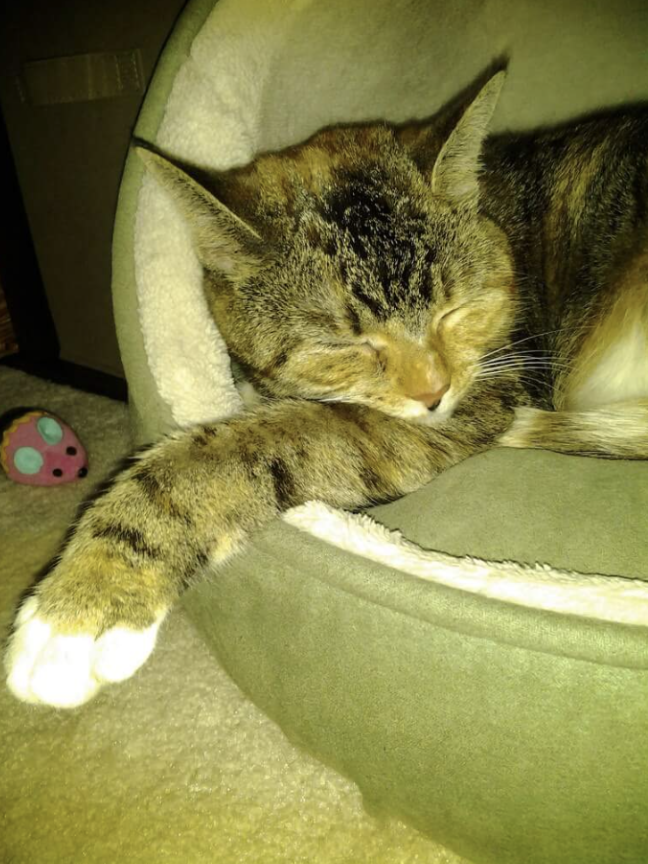January's Case of the Month - 2023
Ureteral Papilla Obstruction with Spontaneous Resolution in a Cat
PATIENT INFORMATION:
Age: 11yo
Gender: Female Spayed
Species: Feline
Breed: DSH
Weight: 6.7lbs
HISTORY:
Past Medical History:
- constipation, managed with diet & Miralax
-R hip luxation 9/10/2020
-Cherry Eye
Historic lab findings 2020- SDMA 11 ug/dL, CREAT 1.0 mg/dL, BUN 16 mg/dL, UA USG 1.024
Presented Mid November 2022 with reduced appetite.
Labs
11/11- SDMA 16ug/dL, CREAT 3.3mg/dL, BUN 49mg/dL, UA USG 1.014
12/13- SDMA 14ug/dL, CREAT 3.0mg/dL, BUN 56mg/dL
1/17- SDMA 22ug/dL, CREAT 3.1mg/dL, BUN 51mg/dLObjecti
INITIAL ULTRASOUND FINDINGS:
Both kidneys were found to have changes suggestive of CKD(coarse mild to moderately hyperechoic renal cortices which were disproportionately large). There was mild-moderate loss of the corticomedullary junction distinction as well as lobar scalloping. The renal pelvis was hyperechoic bilaterally. There were a few small thin-walled anechoic cortical cysts seen throughout both kidneys.(up to 0.2cm)(Lt/Rt = 3.8/3.7 cm). No significant pyelectasia was visualized.(<1.5mm)(Normal - up to 0.4mm*)
The left ureter is mildly dilated from the kidney to the papilla. (up to 2.6mm)
There was a severely hyperechoic, minimally shadowing, rounded structure in the left papilla.(1.7x1.8mm)The bladder was moderately distended with anechoic urine and of relatively normal contour and thickness No neoplasia or other uroliths noted.
Other ultrasound findings - mild hepatopathy, mild pancreatitis and mild lymph node changes.
DDX:
Hyperechoic rounded structure at left ureteral papilla - the findings were moderate - DDx: plug vs. poorly shadowing mineralization vs. emerging neoplasia vs. historic fibrosis/scar/stricture vs. ureteritis
Ureteral dilation - the findings are mild -DDX: ureteral obstruction acute vs. chronic vs. historic (sludge/plug vs. urolith vs. stricture vs. neoplasia vs. other) vs. ureteritis
Kidneys - the findings are moderate - DDX:
a) Chronic nonspecific change - (chronic glomerulonephritis vs. amyloidosis), chronic interstitial nephritis, chronic nephritis. In cats, the loss of corticomedullary distinction is not unusual with chronic renal disease as interstitial fibrosis in the medulla renders its echogenicity similar to that of the cortex.
b) Acute renal failure/Nephritis (infectious, GN, toxic, etc.) vs. Acute-on-Chronic renal failure
c) Lymphosarcoma
d) Pyelonephritis
SELECT IMAGES:
Image 1: Maytrix/Calculi plug at the left ureteral papilla/distal ureter- Noted in Mid- November
Image 2: Left ureter just distal to kidney
Image 3- Left Ureter approaching the bladder
Image 4 - Bladder trigone free of obstruction at 30 and 60 days. No evidence of hydroureter
Diagnosis - Distal ureteral/ureteral papilla partial obstruction with associated mild hydroureter
CASE OUTCOME:
We are happy to report this patient spontaneously passed the obstruction and has continued to do well with a healthy appetite. Given the very distal position of the obstruction, lack of significant pyelectasia(indicating likely a partial or resolving obstruction) and the improvement in the patient’s appetite, supportive care and acupuncture were continued. The patient was closely monitored for deterioration as aggressive therapy was not going to be pursued. The patient’s appetite continued to improve. Follow up ultrasounds at approximately 30 and 60 days showed complete resolution of the obstruction and no mineralizations/obstructions present in the urinary/urethra bladder.
Her CKD will continue to be monitored. There was a mild improvement in renal function after resolution of obstruction indicating the likely presence of CKD prior to the development of obstruction.
PROGNOSIS/DISCUSSION:
The prognosis is good with some risk of developing future ureteroliths or stricture. It is likely that this patient already had chronic renal disease which likely progressed secondary to the ureteral obstruction. (Other hematological changes associated with CKD were noted on labs)
Clinical signs of partial or unilateral ureteral obstruction in cats may be as subtle as anorexia or pain. Changes in renal parameters in cats showing signs of pain or anorexia should be investigated with abdominal ultrasound.
In some cases ureteral obstruction can result in compensatory hypertrophy of the contralateral kidney (not present in this case). All cases of “Big-Kidney, Little Kidney syndrome” should be investigated for signs of ureteral obstruction independent of uremic state.
References:
Kochin EJ, Gregory CR, Wisner E, et al. Evaluation of a method of ureteroneocystostomy in cats. J Am Vet Med Assoc 1993; 202: 257–260.
Lamb CR. Ultrasonography of the ureters. Vet Clin North Am Small Anim Pract 1998; 28:823-848.
Thank you to our friends at Integrative Veterinary Center of Richmond for including us in the care of this lovely patient.







